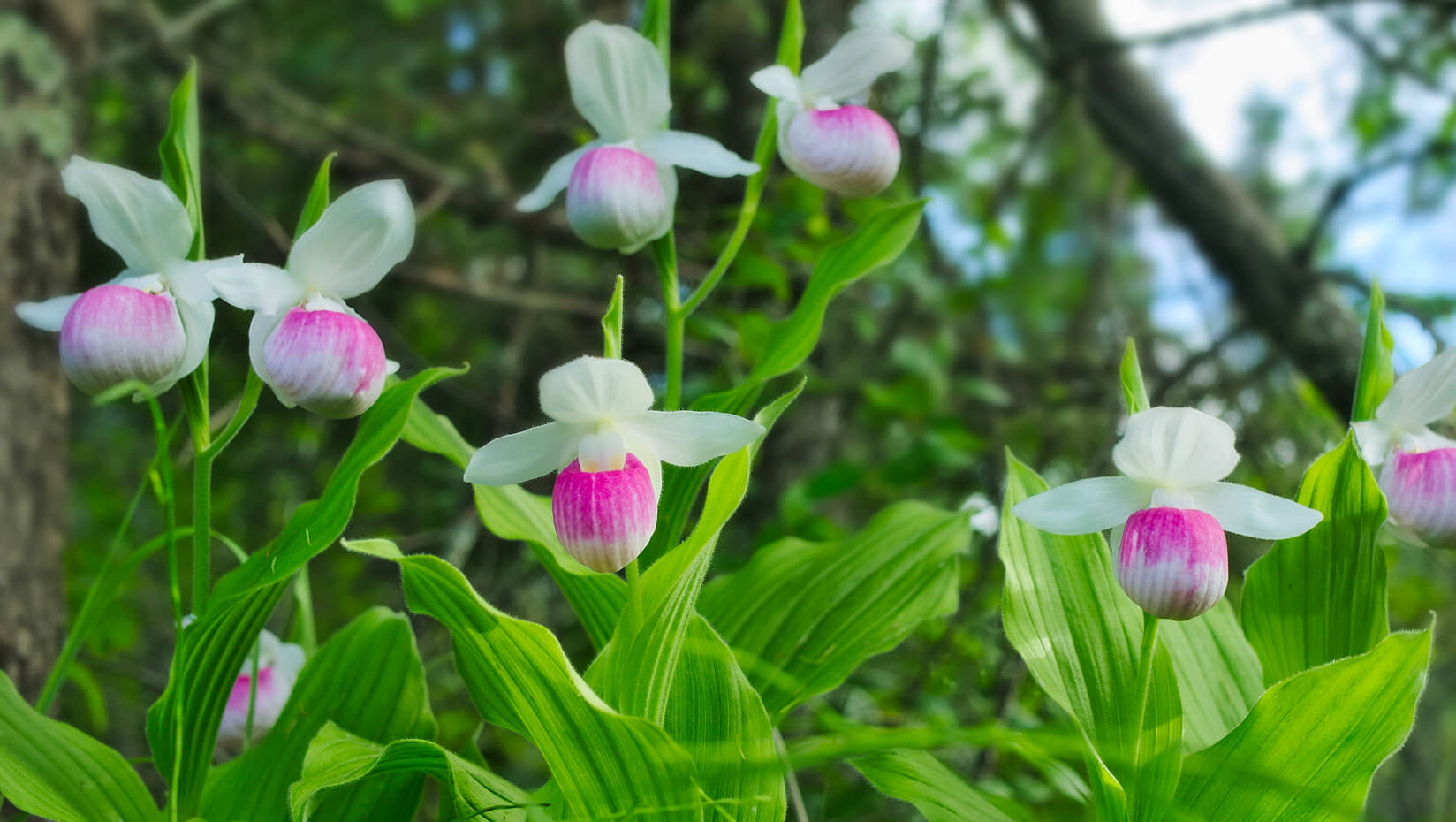
McDonough MacKenzie documents dramatic loss of native plants on MDI
Areas across the Northeast have lost an average of one-fourth of their local plant biodiversity in the last 50 to 150 years.
Certain plant families had even higher rates of loss, says Caitlin McDonough MacKenzie, a postdoctoral researcher at the University of Maine.
When her research team compared 19th century botanical records from Mount Desert Island (most of which is protected as Acadia National Park) to a recent survey of plants, it found 16 percent — approximately one of six — of the plants documented in the late 1800s are now extinct on the island.
Forty-three percent of orchids and 43 percent of lilies recorded in 1894 are gone from Mount Desert Island, says McDonough MacKenzie. Another 33 percent of the plant species declined in abundance.
“The loss of native plants is dramatic across our region, right here where we live. It is not confined to faraway places like tropical rain forests or areas being paved over for development,” says McDonough MacKenzie.
Causes are likely a combination of habitat loss, climate change, damage from deer, and pollution, she says.
Each of the 13 Northeast sites examined by the research team showed a drop in the proportion of native plant species in local flora.
The study found no correlation between conservation status and the magnitude of local plant biodiversity loss. While losses ranged between 3.5 percent (Finger Lakes region in New York) and 53 percent (Staten Island, New York) of local plant species, the presence of conservation lands was not associated with smaller losses.
“We can’t point to a particular species and say, ‘This one was lost because of climate change, this one because of acid rain, this one because of habitat loss, and this one because of random chance. Sometimes species go extinct in nature,’” says McDonough MacKenzie.
“Our study primarily sheds light on just how widespread those losses are, including in areas that are protected and that people care deeply about. Even protecting areas as reservations or state or national parks did not prevent the loss of species.”
The Northeast is one of the best places in the United States to study changes in plant biodiversity, says Richard Primack, professor at Boston University and one of the study’s co-authors.
“Professional and citizen scientists have left a long legacy of botanical specimens, field notes, and published floras,” he says. “Their records provide the opportunity for contemporary scientists to resurvey the same sites and compare changes.”
The dramatic losses of native plants, gains in non-native species (which can harm and displace native species), and variation in how particular locations and species changed throughout the region highlight the importance of historic records and of local knowledge, says McDonough MacKenzie.
“Understanding the changes taking place is essential for managers working to protect these areas and their floras,” she says.
McDonough MacKenzie and her co-authors recommend targeted monitoring of rare species and taxonomic groups like orchids and lilies that have experienced high losses, as well as continued management of invasive species.
They encourage botanists and ecologists to carefully document present-day biodiversity for future generations of researchers.
“The 1894 flora of Mount Desert Island was started by a college kid on a summer trip,” says McDonough MacKenzie.
“He fell in love with botany and sought out mentors and collaborators, but there was nothing on his resume in 1880 that indicated he was a serious botanist who would create a lasting legacy. Go outside and start looking at flowers — that’s where Edward Rand started and 125 years later his data is the foundation of our work.”
McDonough MacKenzie’s study, “Floristic change in New England and New York: regional patterns of plant species loss and decline,” is in Rhodora, a botany journal devoted to the flora of North America.
Glen Mittelhauser of the Maine Natural History Observatory and Abraham J. Miller-Rushing of Acadia National Park and Schoodic Education and Research Center are co-authors.
Contact: Beth Staples, 207.581.3777, beth.staples@maine.edu
